- Home
- Law & Order
- Here's What It's Like In The Most Dangerous City In The World
Here's What It's Like In The Most Dangerous City In The World
Drugs have wreaked havoc on Honduras, especially San Pedro Sula. Below, members of Honduras' military police arrange almost 900 pounds of cocaine seized in a container carrying soft drinks coming from Costa Rica in July 2014.

Roughly 15% of US-bound cocaine lands in Honduras at some point.
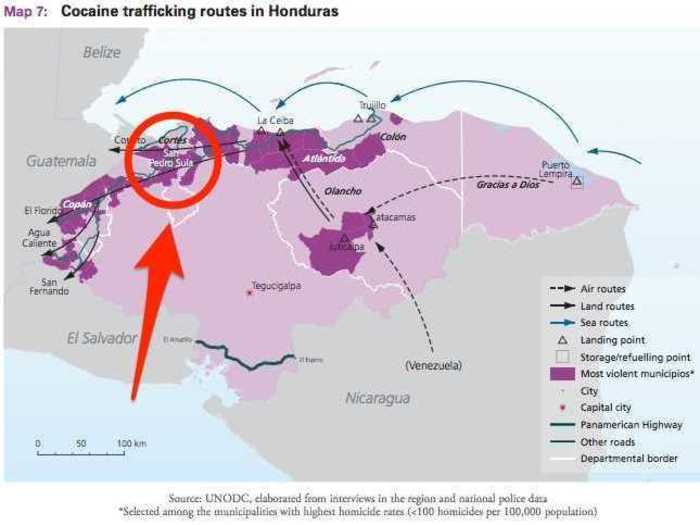
More than half of all cocaine seizures in Central America occur in El Salvador and Honduras, and Honduras' numbers more than tripled between 2010 and 2011. In 2011, San Pedro Sula police discovered the first Mexican-run cocaine lab, shown below, ever found in Central America.
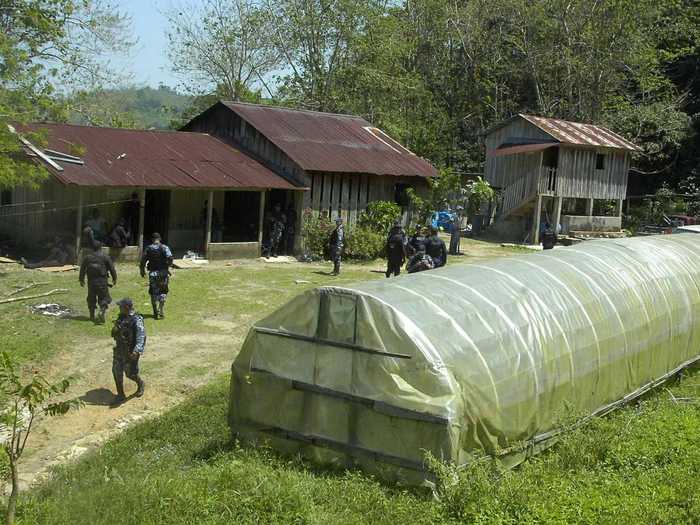
Drugs trafficked by violent gangs fuel much of the conflict. Here, a woman sobs after "hooded criminals" shot nine people outside a morgue in August 2014. The vast majority of murders in the city go unsolved.
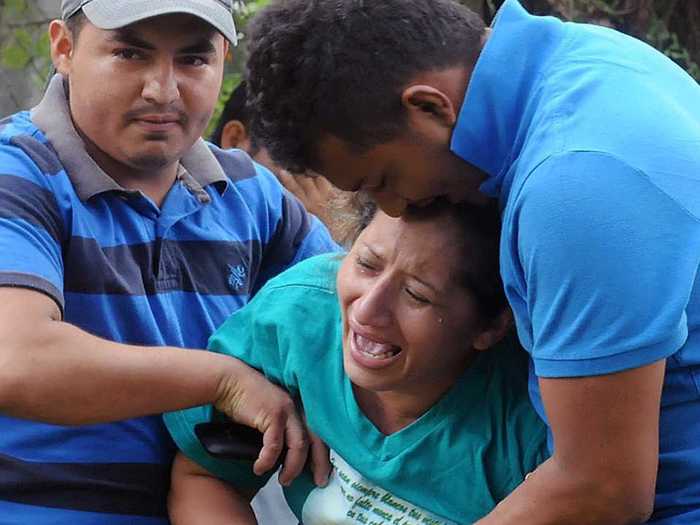
Source: Business Insider
In 2008, the mounting number of murders forced San Pedro Sula to store bodies in refrigerated trucks before transporting them to mass-burial sites.
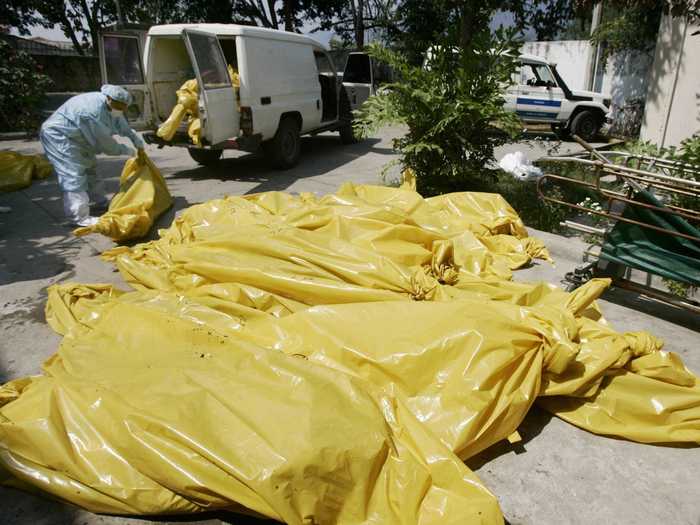
Source: Reuters
One of the worst gangs, Mara Salvatrucha, also known as MS-13, developed among Central American-born inmates in California in the 1980s and spread to Honduras and El-Salvador when inmates were deported. Members, like the inmate in prison below, often cover their bodies and faces in tattoos, like the letters M or S.
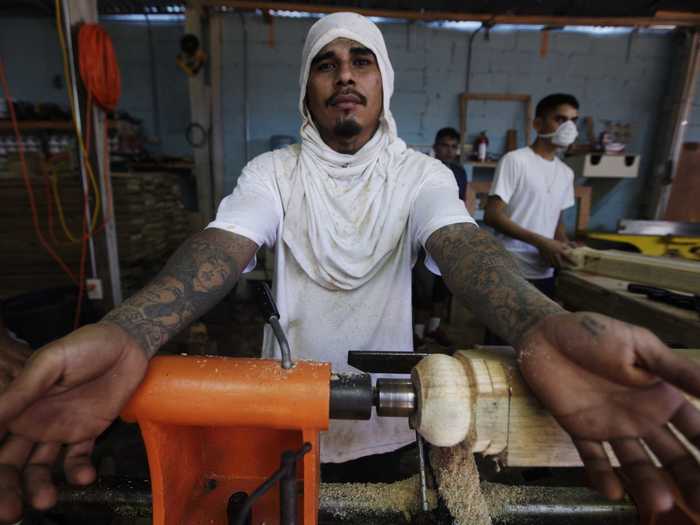
Source: Associated Press
The situation grew so dire that the Catholic Church tried to broker a truce in May 2013 between gangs Calle 18 and Mara Salvatrucha. Below, masked members speak to the press with San Pedro Sula's bishop.
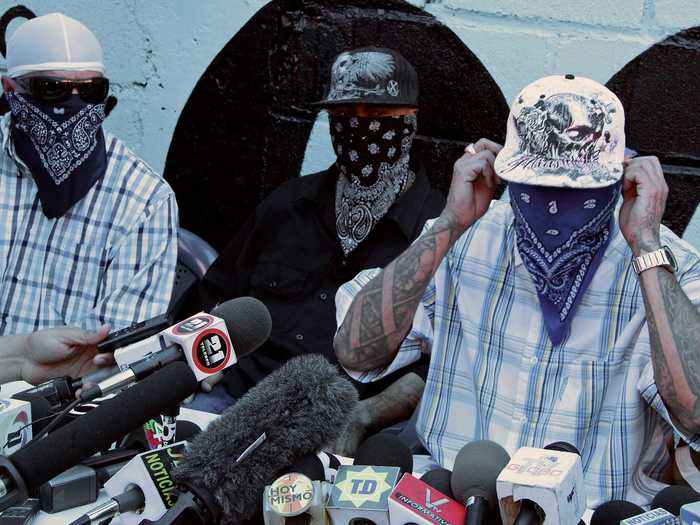
When Honduras' new president, Juan Orlando Hernandez, took office, he promised to crack down on crime. Below, he holds a press conference in San Pedro Sula about the murder of two female attorneys in 2014.
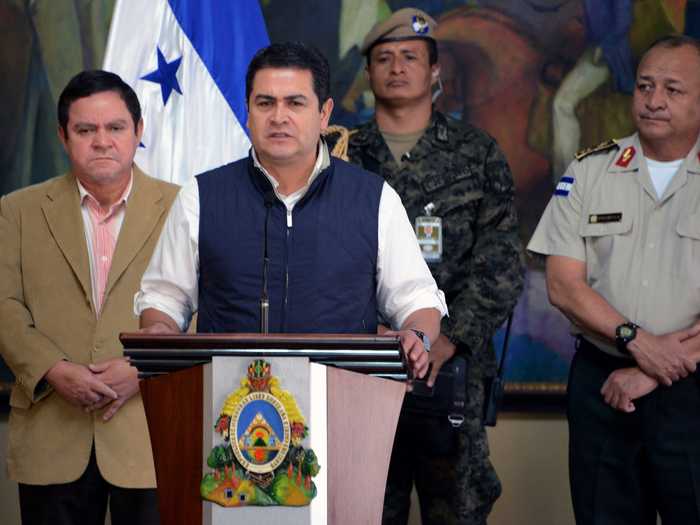
Source: New York Times
Lax gun laws don't help either. In Honduras, citizens can own as many as five personal guns. Police confiscated the weapons below from members of the "Calle 18" gang after a drug sting. Firearms cause 83.4% of homicides in Honduras, compared to 60% in the US.
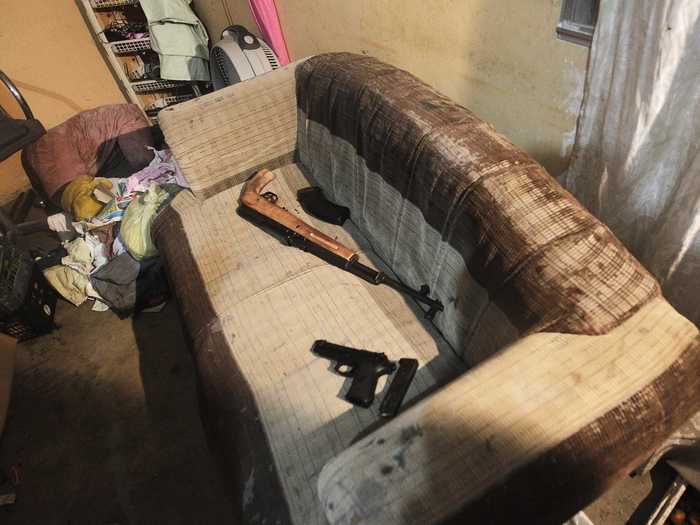
Source: The Guardian
Not even prison can control the warfare. At least 14 inmates died in a massive riot in 2012 when rival gangs attacked each other with guns and machetes and started fires. A year later, inmates essentially took over the prison system when the state abandoned its rehabilitation attempts.
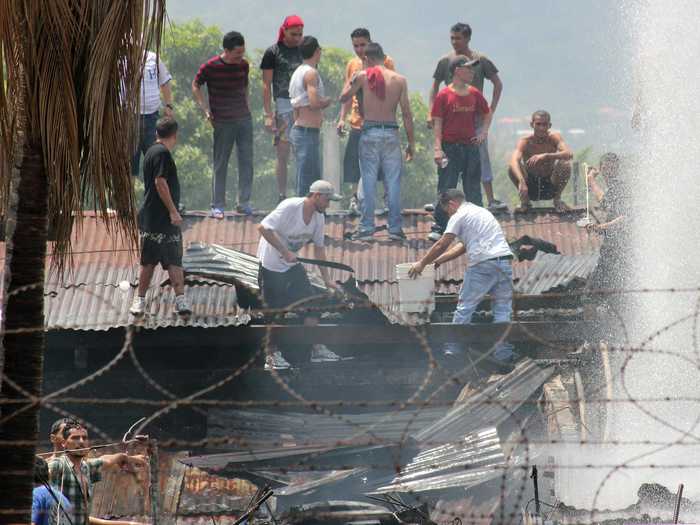
Source: Associated Press
Citizens in San Pedro Sula also have to deal with a corrupt police force. At least five recent cases implicate officers in death-squad-style killings of gang members.
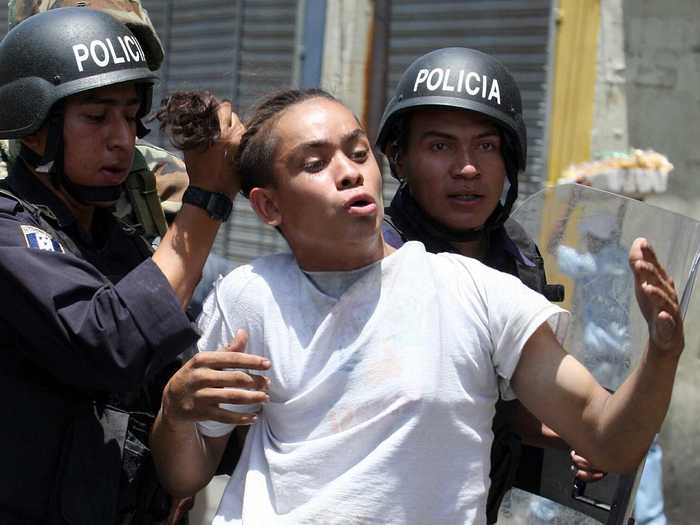
Source: The Guardian
Even former national police chief Juan Carlos “El Tigre” Bonilla, shown below, faces accusations of extrajudicial killings. In 2002, the Honduran government accused him of participating in a death squad called Los Magníficos. He only paid a $5,000 fine. The force dismissed him in December 2013.
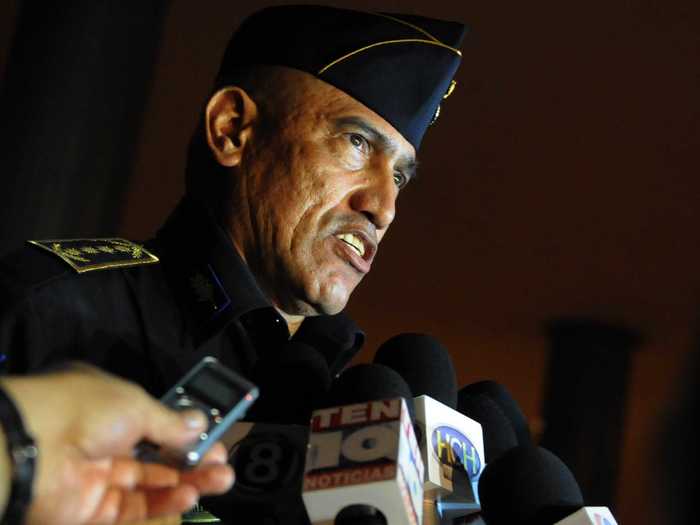
Source: New York Times
In another attempt to quell tensions, the Honduran government sent about 1,000 military police into Tegucigalpa and San Pedro Sula in 2013.
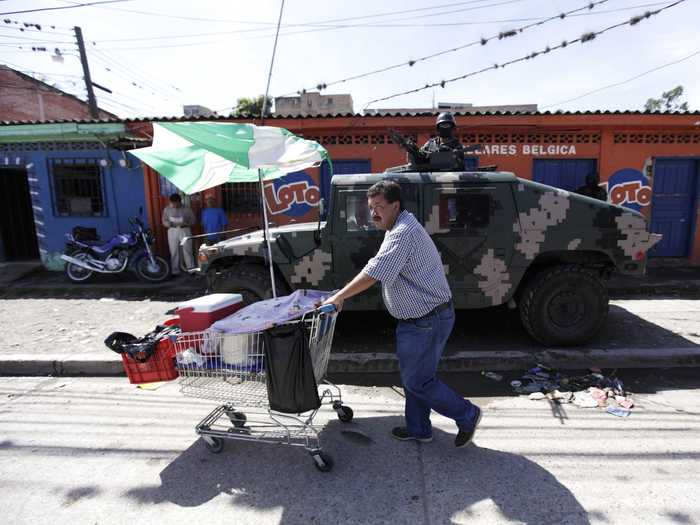
Source: Bloomberg
These military police officers even board public buses at checkpoints throughout the city to look for weapons and drugs.
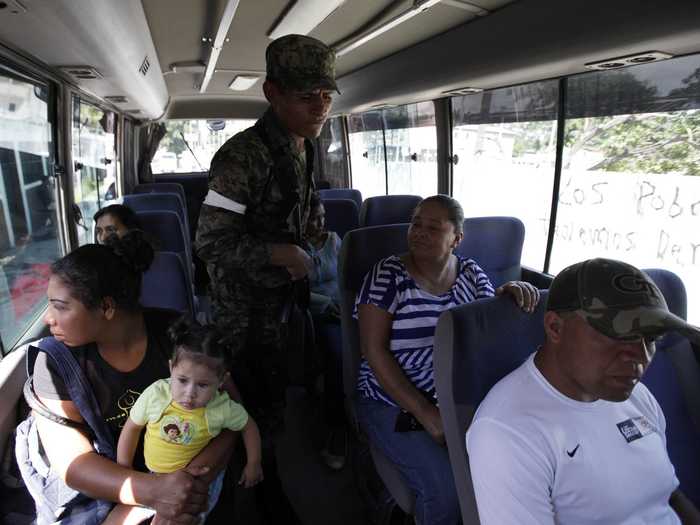
San Pedro Sulans live in both fear and poverty. In Honduras, the second poorest country in Latin America, 65% of the population lives below the poverty line. This man holds his baby outside their makeshift home in the "Rio Blanco" neighborhood of San Pedro Sula.
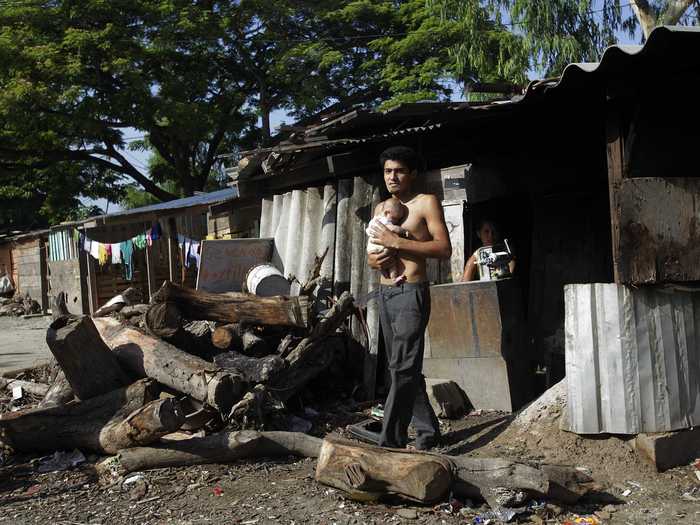
Source: CIA World Factbook
In rural areas of Honduras, only 15% of the population has access to drinking water. Many families wash their clothes and drink from the same sources.
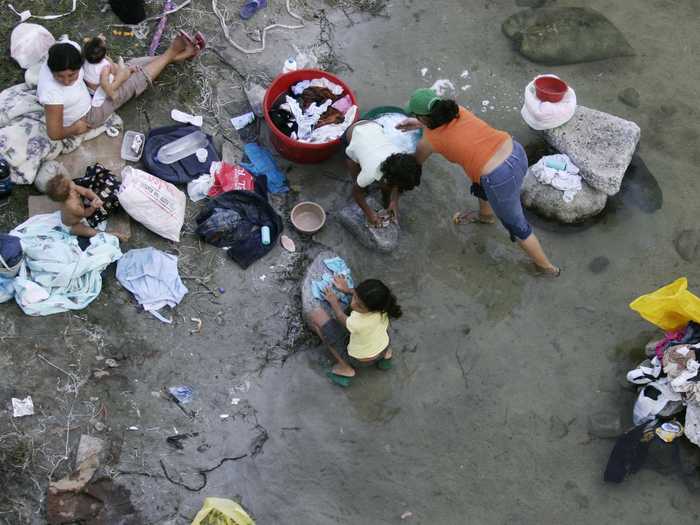
Roughly 80% of citizens in Honduras don't have access to healthcare, and many families either pay out-of-pocket for medical attention or go without. Below, volunteers treat a sick woman in the back of a truck.
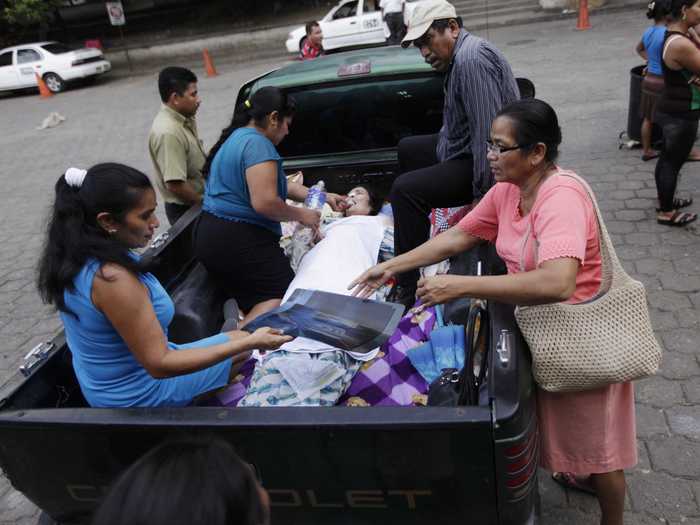
Source: AmeriCares
To make matters worse, about 33,000 Hondurans, like Wendy Hernandez below, have HIV/AIDS, according to a UNICEF estimate. Hernandez became infected when she was raped 10 years ago. Her son, 3 at the time of the photo, is also HIV-positive.
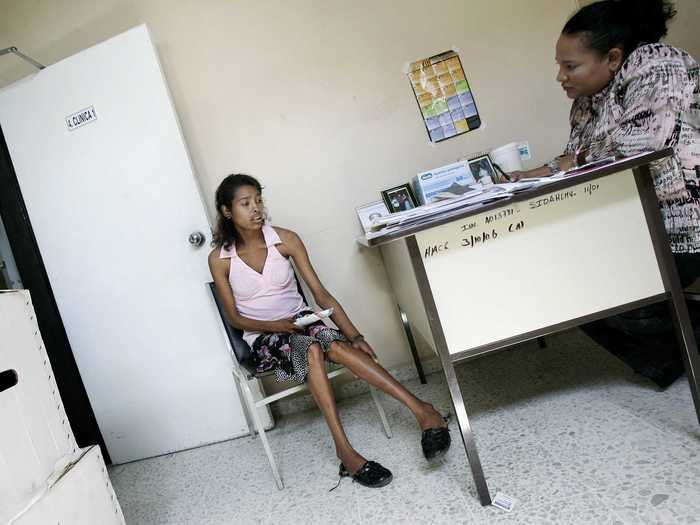
Source: UNICEF
The poor living conditions hit children hard. In Honduras, two-thirds live in poverty, and 7% are underweight. Social workers found Jason Lopez, 9, weighing only 17.6 pounds — the normal weight of a 2-year-old. Here, he recovers from severe malnutrition at a hospital in San Pedro Sula.
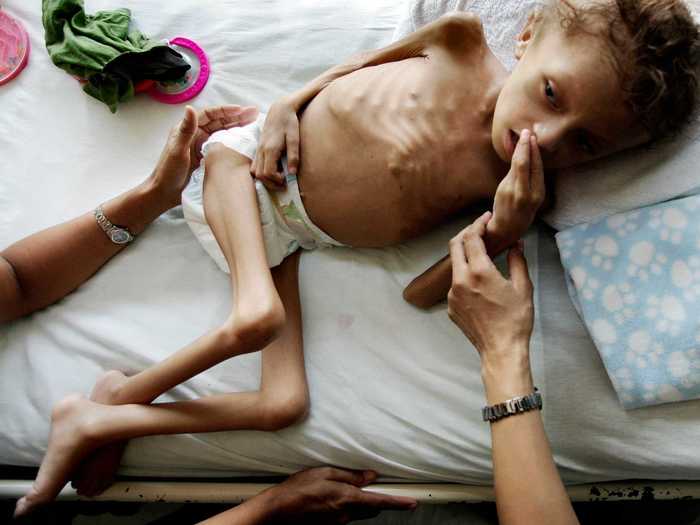
Source: UNICEF
In the summer of 2014, an unprecedented number of undocumented minors fled to the US border, shown in the photo below. Many came from San Pedro Sula to flee gang violence.
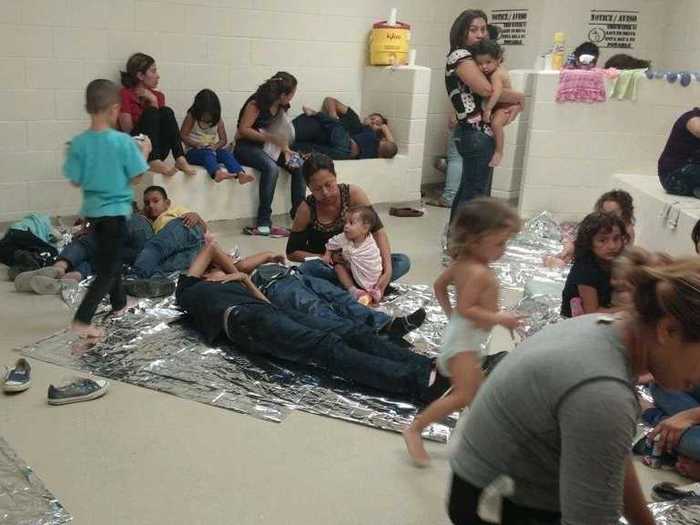
Source: New York Times
Hondurans of all ages often flee the country. The US, however, does its best to send them back. Below, deportees walk toward an immigration office after arriving in San Pedro Sula on a flight from the US. In 2012, the US deported more than 32,240 Hondurans by air.
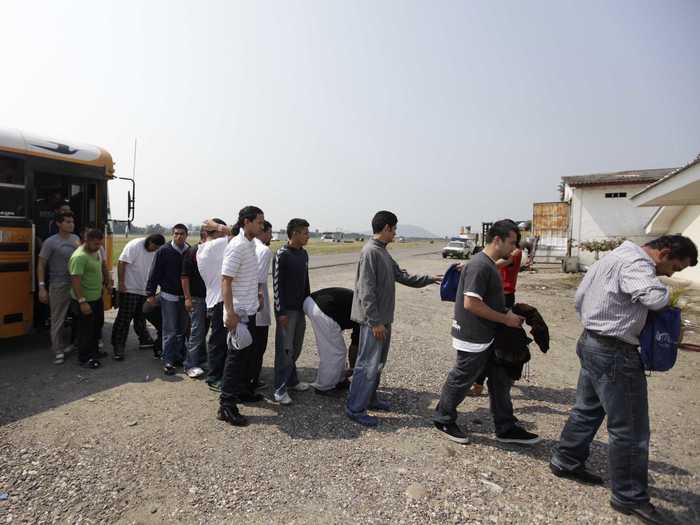
Source: Reuters
Whatever the future holds for Honduras, citizens continue to plead for action. Here, a devotee of the Light of the World Church holds a protest sign reading: "No to juvenile violence."
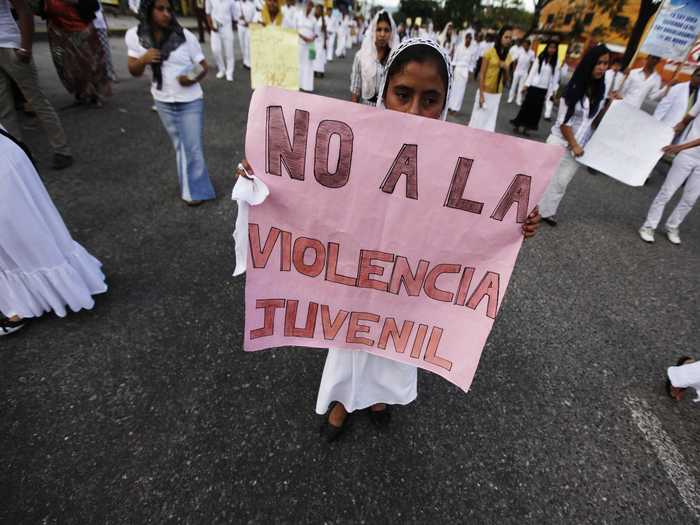
Source: Reuters
You've seen the worst of San Pedro Sula and Honduras.
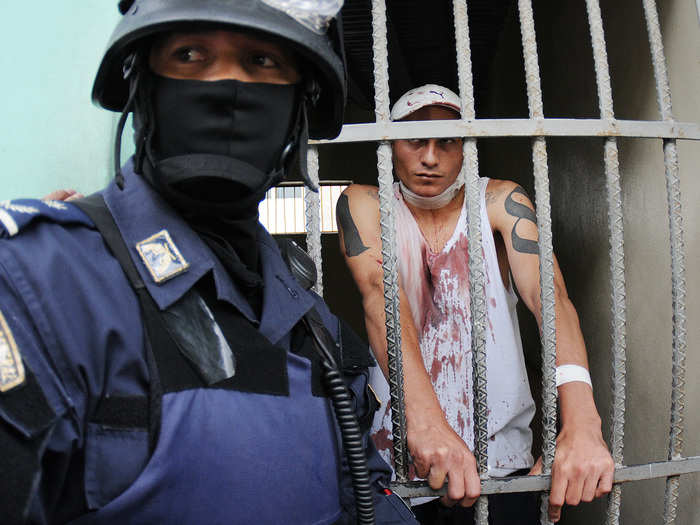
Popular Right Now
Advertisement